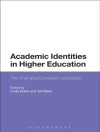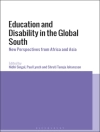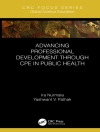Examining the way people imagine and interact in their cities, this book explores the post-cosmopolitan city. The contributors consider the effects of migration, national, and religious revivals (with their new aesthetic sensibilities), the dispositions of marginalized economic actors, and globalized tourism on urban sociality. The case studies here share the situation of having been incorporated in previous political regimes (imperial, colonial, socialist) that one way or another created their own kind of cosmopolitanism, and now these cities are experiencing the aftermath of these regimes while being exposed to new national politics and migratory flows of people.
สารบัญ
List of Illustrations
Acknowledgements
Introduction
Caroline Humphrey and Vera Skvirskaja
Chapter 1. Odessa: Pogroms in a Cosmopolitan City
Caroline Humphrey
Chapter 2. Negotiating Cosmopolitanism: Migration, Religious Education and Shifting Jewish Orientation in Post-Soviet Odessa
Marina Sapritsky
Chapter 3. At the City’s Social Margins: Selective Cosmopolitans in Odessa
Vera Skvirskaja
Chapter 4. ‘A Gate, but Leading Where?’ In Search of Actually Existing Cosmopolitanism in Post-Soviet Tbilisi
Martin Demant Frederiksen
Chapter 5. Cosmopolitan Architecture: ‘Deviations’ from Stalinist Aesthetics and the Making of Twenty-first Century Warsaw
G. Michał Murawski
Chapter 6. Sinking and Shrinking city: Cosmopolitanism, Historical Memory and Social Change in Venice
Joanna Kostylo
Chapter 7. Haunted by the Past: Immigration and Thessaloniki’s Questionable Path to a New Cosmopolitanism
Panos Hatziprokopiou
Chapter 8. ‘For Badakshan – the Country without Borders!’: Village Cosmopolitans, Urban-Rural Networks and the Post-Cosmopolitan City in Tajikistan
Magnus Marsden
Notes on Contributors
Index
เกี่ยวกับผู้แต่ง
Vera Skvirskaja is a postdoctoral researcher in the Department of Anthropology at Copenhagen University. She has worked in arctic Siberia, Uzbekistan and Ukraine. Her recent research interests include urban cosmopolitanism, educational migration in Europe and coexistence in the post-Soviet city.












